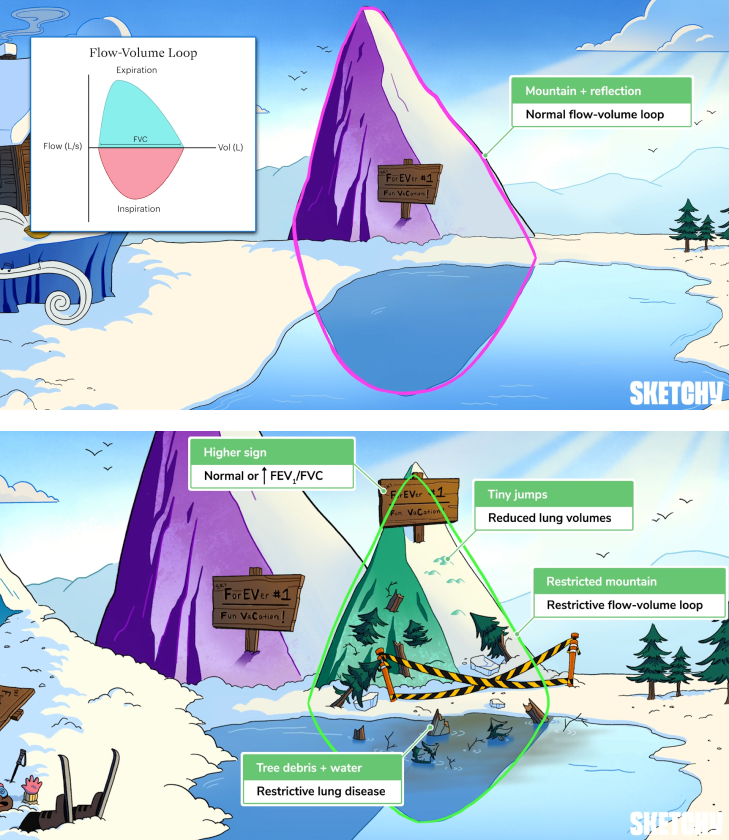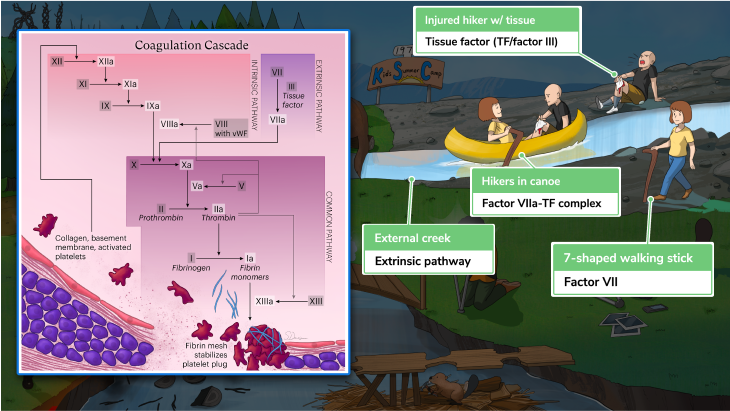While there are many different methods of teaching in medical school, visual learning has gained recognition in recent years as one of the most effective and efficient ways for students to retain information. At Sketchy, we know the benefits of visual learning from frequent positive feedback from students, 90% of whom attribute their success in passing board exams to Sketchy’s visual learning platform. Using our technique, students save an average of 18 hours a week, leading 98% to say they would recommend Sketchy to their peers. To understand the power and potential of visual learning in medical education, let’s look at what visual learning involves, the research behind it, and Sketchy’s approach to this powerful method.

Pulmonary Function Testing Lesson
Broadly speaking, visual learning is defined as the process of acquiring knowledge through visual means such as images, graphs, diagrams, and videos. Over the years, investigators have sought to better understand the role visual learning plays in education. Research has found that learners are more successful in acquiring and retaining material when presented with both pictures and words, rather than words alone.1 For example, when a video-based learning module was used to teach musculoskeletal physical exam skills prior to bedside instruction, researchers determined that the videos improved students’ clinical skills, and that students preferred the videos to traditional methods.2 These findings were consistent with prior studies that examined student learning in biology-related courses.3 Research has also explored the benefits of visual learning in other STEM fields that involve complex systems—from physics to chemistry.4
Given the vast amount of information medical students must learn and recall—from memorization-intensive topics like introductory microbiology and pharmacology, to the synthesis and analysis required in clinical learning—medical education requires strategies that can supplement the classic text-to-lecture approach. By tapping into the power that visual learning has to offer, Sketchy’s visual storytelling experiences create lasting connections in students’ minds—and the ability to serve a multiplicity of learning styles makes Sketchy the perfect supplemental learning tool for a diverse student population. For the full breakdown on exactly how Sketchy works, explore a more detailed review here.

Coagulation Cascade Lesson
In addition to being an effective visual tool for breaking down complex information into smaller, more manageable components, Sketchy’s visual learning platform incorporates interactive elements like Symbol Explorer review cards and corresponding quiz questions. With memorable stories, humorous settings, and magical art, Sketchy captures students’ attention and makes learning more exciting and enjoyable, even for the most intricate and challenging topics. This is crucial because learners are more likely to remember information when it is presented in an engaging and interactive manner.
But we’re not just talking about benefiting students. Visual aids can also help educators present difficult concepts in new and compelling ways that help make that complexity more intelligible and memorable. This is particularly true for abstract concepts and multi-step pathways, both of which are found throughout a medical school curriculum. Moreover, visual aids can reduce the time required to teach these difficult medical concepts.
With the power to improve learning outcomes and enhance students' motivation to learn, visual learning can add significant value to medical education and help prepare students for successful careers in medicine. From early medical school topics like anatomy, physiology, and pathology, to more advanced clinical topics, visual learning can provide immense benefit to students and teachers alike. To learn more about how Sketchy can be incorporated in your classroom today, visit Sketchy.com.
References:
- Mayer, R.E. Applying the science of learning to medical education. Medical Education. 2010;44: 543-549. https://doi.org/10.1111/j.1365-2923.2010.03624.x
- Alomar AZ. Undergraduate Medical Students' Perceptions of an Online Audio-Visual-Based Module for Teaching Musculoskeletal Physical Examination Skills. J Med Educ Curric Dev. 2022 Feb 23;9:23821205221078794. doi: 10.1177/23821205221078794. PMID: 35356417; PMCID: PMC8958220.
- Brame CJ. Effective Educational Videos: Principles and Guidelines for Maximizing Student Learning from Video Content. CBE Life Sci Educ. 2016 Winter;15(4):es6. doi: 10.1187/cbe.16-03-0125. PMID: 27789532; PMCID: PMC5132380.
- Bobek E, Tversky B. Creating visual explanations improves learning. Cogn Res Princ Implic. 2016;1(1):27. doi: 10.1186/s41235-016-0031-6. Epub 2016 Dec 7. PMID: 28180178; PMCID: PMC5256450.